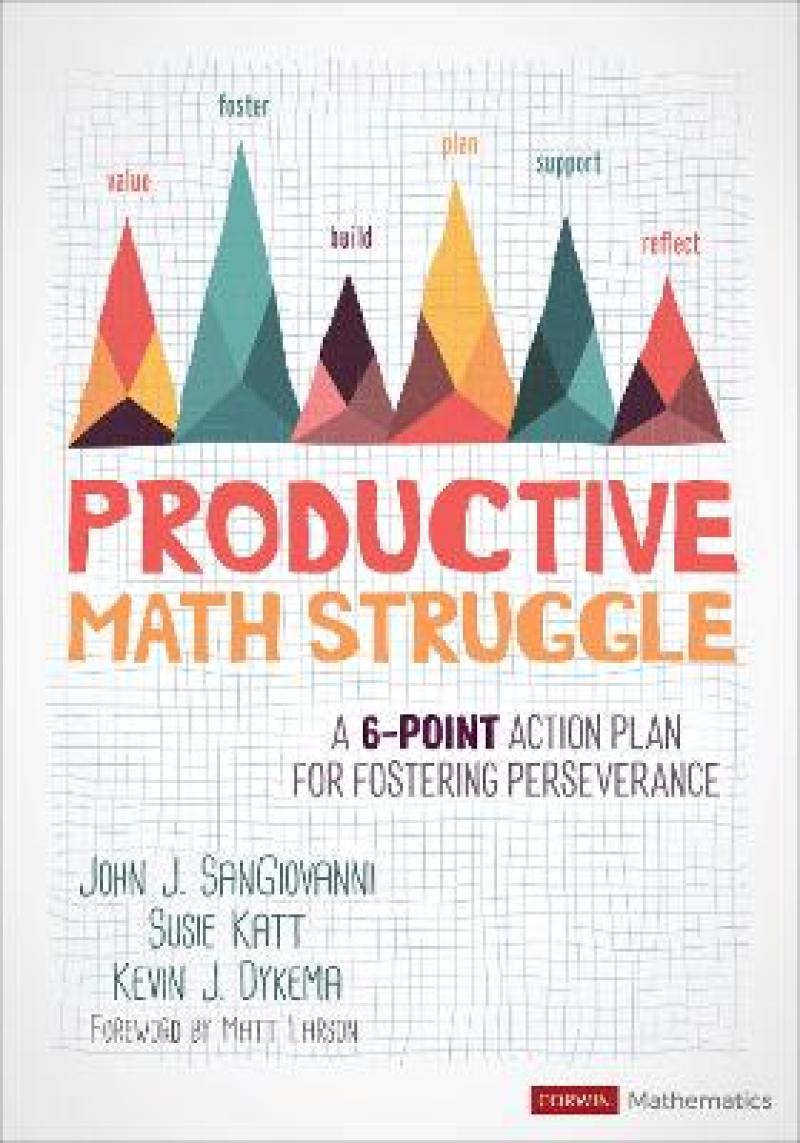"Seldom has a book been as timely or as necessary as Productive Math Struggle is today. . . One of the remarkable accomplishments of SanGiovanni, Katt, and Dykema’s work lies in how they seamlessly connect the research on high-quality tasks, high expectations, identity, and equity to productive math struggle. This is perhaps their greatest contribution. The authors see productive math struggle as a critical feature of mathematics classrooms that support access, equity, and empowerment, specifically arguing that every student is ‘worthy of struggle.’"
From the Foreword by Matt Larson, Ph.D.
Past President (2016-2018), National Council of Teachers of Mathematics
Associate Superintendent for Instruction, Lincoln Public Schools, Nebraska
Struggle is hard. Productive struggle is power.
All students face struggle, and they should—it is how they learn and grow. The teacher’s job is not to remove struggle, but rather to value and harness it, helping students develop good habits of productive struggle. But what’s missing for many educators is an action plan for how to achieve this, especially when it comes to math.
Persevering through difficult challenges to reach new learning is the core of Productive Math Struggle. When left unsupported, struggle can become unproductive and demoralizing, negatively influencing students’ mathematical identities. The authors guide teachers through six specific actions—including valuing, fostering, building, planning, supporting, and reflecting on struggle—to create a game plan for overcoming obstacles by sharing
- Actionable steps, activities, and tools for implementation
- Instructional tasks and vignettes representative of each grade level
- Real-world examples showcasing classroom photos and student work samples
A book study guide is available under the Free Resources tab that helps math educators to learn together on how to incorporate productive math struggle in their classrooms.
Revolving around the idea that math is a way of thinking and understanding, and not just the pursuit of answers and procedures, this book empowers students to embrace productive struggle to build essential skills for learning and living—both inside and outside the classroom.
